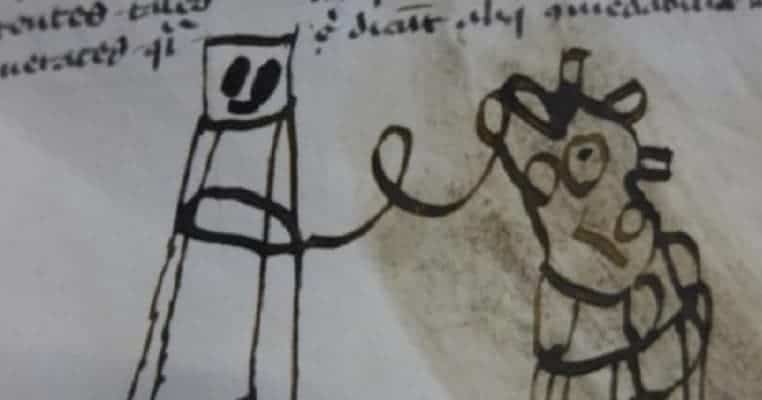Open a beloved old book and the memories unfold. The moment that sweetly acrid smell tickles our noses may be enough to reflect on the time when we first opened that lovely book. And if we’re really lucky, we might glimpse parts of our forgotten past or open a window into someone else’s.
Sometimes, especially if we’re in a museum, or a library as magnificent as Oxford University’s Bodleian Library, we might find drawings from kids bored to tears during a school day in the Middle Ages or imprints of someone’s spectacles. Or even 14th Century pawprints from a wayward cat walking across a Bible in Croatia. If we are extremely lucky, we might discover the beautiful doodles left behind on the back pages of a book.
Indeed, these ancient images are a link to a time we left behind long ago.

The Cat That Trampled This Medieval Manuscript In 14th Century Croatia
Medieval books were not immune to damage while they were being written. Books were costly to produce at this time, so damage would have to be quite extensive for them to be discarded. It was considered perfectly fine if the books had an individual flair all their own because they were, after all, unique products of the human mind.
But sometimes they were also products of a curious cat.
Such appears to be the case in the manuscript mentioned above. When doctoral student Emir O Filipović stumbled across the manuscript at the University of Sarajevo in Dubrovnik, Croatia, he found the mischievous cat’s paw prints that were apparently left behind before the ink on the manuscript had even dried. Filipović surmised that the errant feline interrupted the scribe by sticking its paws in the inkwell before walking across the book. Undoubtedly the 14th Century author was annoyed but likely philosophical. Scribes during this time simply crossed out errors and moved on.
But it doesn’t seem likely that this kitty pounced while the scribe was still writing because the position of the paw prints show that the book was already bound and completed. There’s the chance the writer may have left the book open while he worked on another copy nearby. Or perhaps, as Kate Wiles, an expert in medieval linguistics has suggested, the scribe took a lunch break and left the manuscript out.

The chicken who crossed the manuscript instead of the road
The trend of wayward animals trampling books continued even after the invention of the printing press in the 15th Century. The Bible in the photo above has been with us since the 16th Century. As you can see, a fair-sized bird, most likely a chicken, traipsed across the open pages, leaving muddy footprints behind.
But sometimes cats and chickens weren’t the only ones bodging the books.

